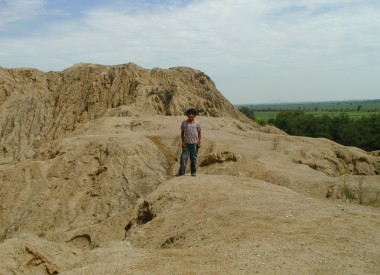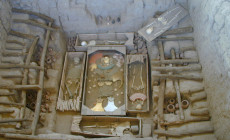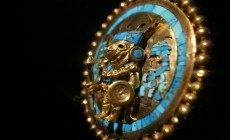-
Latin America
Latin America
- Countries (hidden space)
- Galapagos & Ecuador
- Guatemala
- Mexico
- Panama
- Peru
- Popular Attractions
- Machu Picchu
- Inca Trail
- Easter Island
- Galapagos Islands
- Patagonia
- Rio de Janeiro
- Iguazu Falls
-
Africa
Africa
- Spacer Africa
- South Africa
- Zimbabwe
- Popular Attractions
- Cape Town
- Okavango Delta
- Sossusvlei Dunes
- Victoria Falls
- The Kruger
- The Garden Route
- Masai Mara
-
Asia & Middle East
Asia & Middle East
- Asia
- Borneo (Malaysia)
- Cambodia
- India
- Japan
- Middle East
- Jordan
- Spacer Asia
- Laos
- Sri Lanka
- Uzbekistan
- Vietnam
- Popular Attractions
- Taj Mahal
- Lion Rock (Sigiriya)
- Angkor Wat
- Ha Long Bay
- Kyoto
- Petra
-
Destinations
- Latin America
- Argentina
- Bolivia
- Brazil
- Chile
- Colombia
- Costa Rica
- Galapagos & Ecuador
- Guatemala
- Mexico
- Panama
- Peru
- Asia
- Borneo (Malaysia)
- Cambodia
- India
- Japan
- Laos
- Sri Lanka
- Uzbekistan
- Vietnam
- Middle East
- Jordan
- Southern & East Africa
- Botswana
- Kenya
- Namibia
- South Africa
- Zimbabwe
- Contact Us
-
About
About
Llama Travel provides high quality holidays at the lowest possible prices.
99% recommend us Lower prices - guaranteed Financially protected by ATOL
In February 1987, Walter Alva, an archaeologist from Lambayeque received a call from the local police asking him to come and inspect some relics they had impounded from a huaquero, a grave robber. Rather than a few pieces of ceramics, as might have been expected, the relics turned out to be 33 pieces of Moche gold, silver, copper and seashell of amazing quality, indicating a royal tomb. Unfortunately, many of the pieces from this tomb have never been recovered. However, the importance of the treasures founds by the grave robbers alerted archaeologists to the importance of the site of Sipán. Further excavations at the site led to the discovery of the tomb of the Lord of Sipán, which turned out to be the most important archaeological discovery in Peru, and possibly in the world, since the 1950s. Further research revealed the entire court of a major Moche ruler, and the information provided by the discovery helped propel the importance of the Moche culture to a similar level to that of the Incas, Aztecs and Mayas. The Señor de Sipán dates from around 250AD.
Since the discovery of the Señor de Sipán in 1987 several other important tombs have been discovered at the site, one of which included treasures even more amazing than those of the Señor de Sipán. This tomb belonged to a Moche leader, now know as the Viejo Señor de Sipán, dating from around 150AD. It is probable that this was in fact one of the Señor de Sipán’s ancestors. Another important tomb discovered at the site is that of El Sacerdote, the priest, from about 350AD. Although of a lower rank than the Señor de Sipán and the Viejo Señor de Sipán, the tomb is still very important, and many treasures were discovered here, including a chalice. This was probably used for ceremonial purposes, possibly for drinking the blood of sacrifices.
An interesting aspect of many of the tombs found at Sipán is that the rulers were not buried alone, but with other humans, and even animals, who were sacrificed to accompany the ruler on his journey. The Señor de Sipán was buried with 8 others, including one child, and there are also 2 llamas. In most of the important tombs is a sacrificed guard with his feet cut off. This ensured that he did not run off and abandon his leader. However, in the tomb of the Viejo Señor de Sipán there is no guard and no coffin. It is likely that the more complex burials developed later in the Moche culture.
The site of Sipán was used by the Lambayeque culture after it was abandoned by the Moche people. However, its importance was far less significant, and a cemetery for common people has been discovered.
The site of Sipán, also known as Huaca Rayada, is obviously very important archaeologically, and was the administrative centre of the Moche culture in Lambayeque as well as the burial centre for its leaders. The 13 tombs excavated so far, and the further tombs that will no doubt be discovered, are helping to increase the knowledge of the Moche culture. There are replicas of how a few of the tombs were found, including the tomb of the Señor de Sipán and the Viejo Señor de Sipán, and it is also possible to see some of the tombs in excavation. The site is well worth visiting as long as you have a guided visit, giving an insight into the importance of the area and the background to the Moche culture.
There is a small museum at the site, which includes photos and reproductions of some of the treasures discovered at the site. There is also an interesting scale model of how the site must have been in the days of the Moche.




